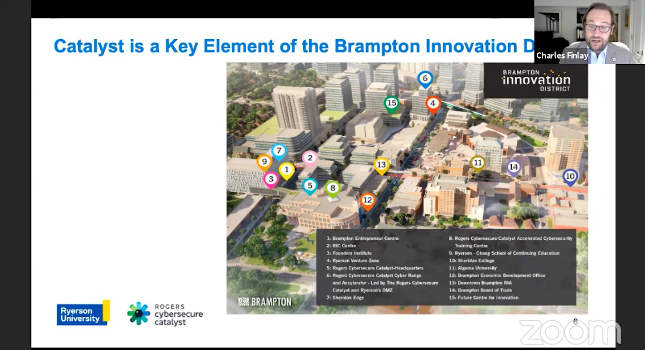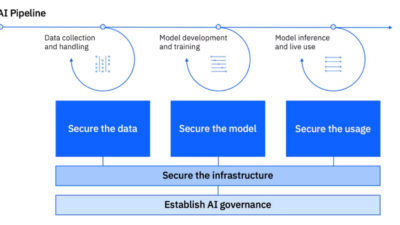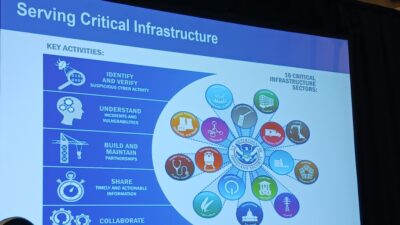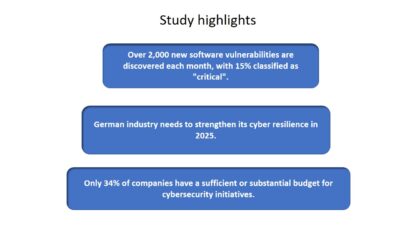Cybersecurity remains a growing challenge for many, and one way to bring greater awareness to the challenge is through collaboration among public, private and academic institutions. See three lessons to improve cybersecurity.

Cybersecurity has become a major topic after recent high-profile attacks such as SolarWinds and the Oldsmar attack in Florida. Our work world continues to change due to COVID-19 and is forcing cybersecurity to the front for many. Cybersecurity remains a difficult topic to grasp, and there is a major skills and knowledge gap on the topic. How can this be addressed?
Charles Finlay, executive director for the Rogers Cybersecurity Catalyst in Brampton, Ontario, Canada, argues the best way is collaboration among the academic, public and private sectors in his presentation “Cybersecurity Collaboration in Action: Key Learnings from a Public/Private/Academic Partnership” at Hannover Messe 2021 Digital Edition.
Finlay cited three reasons why collaboration is the best way to find cybersecurity solutions.
1. Problems cross the public and private domains. Cybersecurity is a major economic section, and it’s a major concern.
2. Solutions require significant technical expertise. These challenges, Finlay said, require a lot of know-how, and it exceeds what is available in any one sector. Together, he said, we are going to get to sufficient solutions to cybersecurity.
3. Solutions require substantial sustained investment. Those resources, Finlay said, are not going to be sufficient from any one sector. It’s only by pulling the sectors together and leveraging the combined financial power.
The Rogers Cybersecure Catalyst, founded with national and local government support, as well as private investments, is designed to be a collaborative solution. It is a not-for-profit center operated by Ryerson University in Brampton, Ontario.
“We are committed to relentless collaboration in building the Canadian cybersecurity innovation ecosystem,” Finlay said.
Public and private collaboration, in this case, has brought many companies and entities together. This has helped create the Brampton Innovation District, which brings many different innovation hubs together. All 15 items highlighted in the diagram, Finlay said, are dedicated to working together and bringing out the best in each other.
“Having the support of a municipal partner is critical for the innovation we’re trying to achieve,” Finlay said.
Five pillars of cybersecurity advancement
The Rogers Cybersecure Catalyst focuses on five key pillars:
- Educate: Cyber training and certification
- Collaborate: Leveraging cyber expertise across Ryerson University
- Accelerate: Support for Canadian cyber scale-ups through public and private means.
- Innovate: Support for applied research and development in cybersecurity.
- Advocate: Public education and policy in cybersecurity
All five pillars, much like the innovation district, feed into one another and create new possibilities and solutions. It is a mutually beneficial operation if everyone works together and is open and transparent about their goals.
Cybersecurity education and jobs
The catalyst, in addition to developing innovation, is helping develop jobs. “We have an acute labor shortage in cybersecurity-trained professionals,” Finlay said. “We are committed to answering this challenge.”
They’re doing this through with a program called the Accelerated Cyber Training Program, which is fully financed by private and public partners. That means it’s free to any student who wants to enter the program. The program also is designed to encourage women to attend and learn about cybersecurity and address the gender as well as the skills gap.
“We want to address inequities in the sector,” Finlay said.
By the end of 2023, there will be almost 700 graduates who will have the necessary and internationally recognized certifications to get jobs throughout Canada.
Three lessons for future cybersecurity improvements
Finlay said he has learned a lot in the last 2 ½ years working in this program. The three lessons he has taken away fit into what he and the catalyst have been working toward:
1. Leverage expertise and not just resources. “It’s easy enough as we build hubs for innovation to think only about finances,” Finlay said. “However, all of our private sector financiers come with subject matter experts (SMEs) and it is critical to get them involved. It’s important we leverage the expertise and not just the financial side.”
2. Communicate, communicate, communicate. “It’s so great when everyone is open,” Finlay said. “And it’s not just communication between the group and stakeholder, but among the private groups. Understand the motivations of why they are doing what they’re doing.”
3. Adapt. “It’s critical that we understand outcomes, results and iterate to deliver successful programs that reflect the facts on the ground.”
The program’s success is through its transparency and getting people and groups from every angle involved. Like anything else, it remains a work in progress, but is nonetheless starting to show results.
The 2021 Hannover Messe Digital Edition runs April 12-16.
Chris Vavra, web content manager, CFE Media and Technology, [email protected].
ONLINE extra
See more about cybersecurity.


